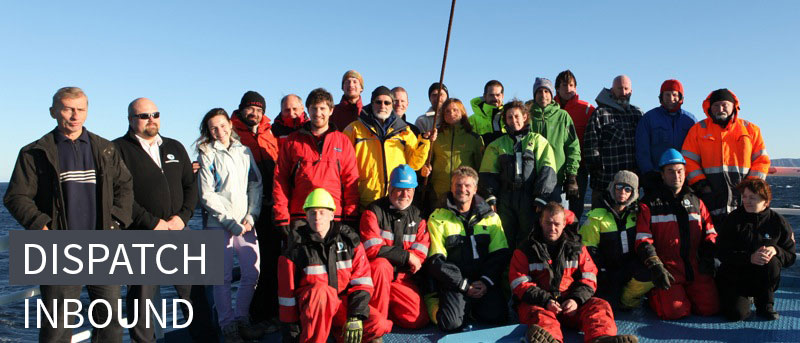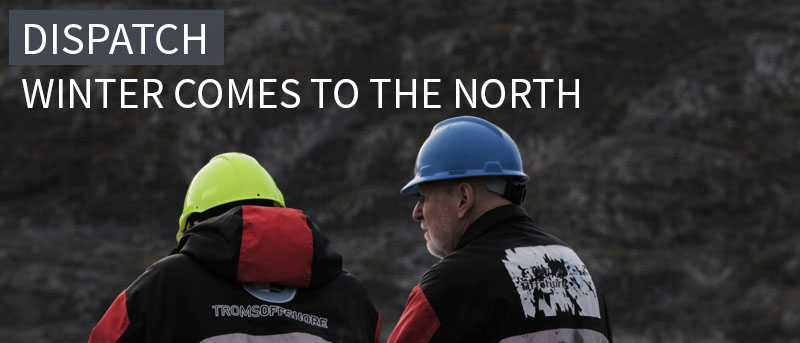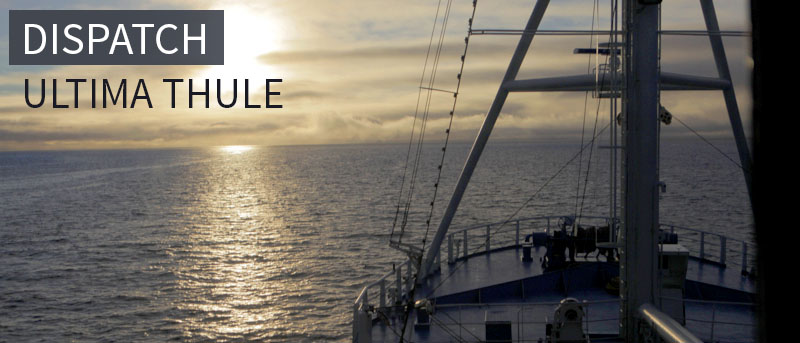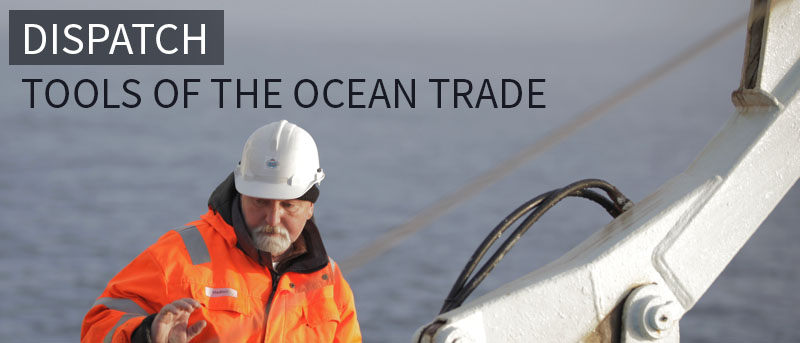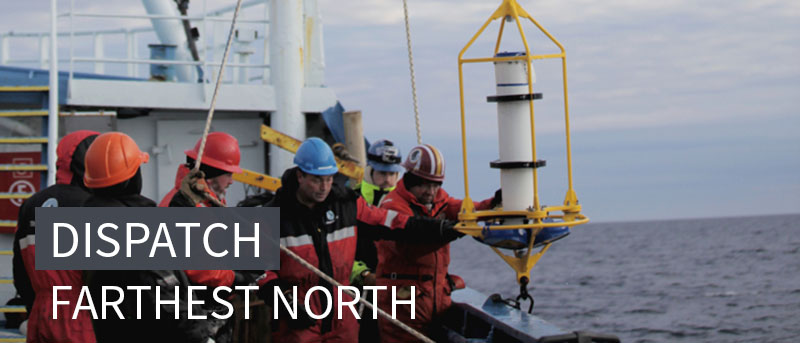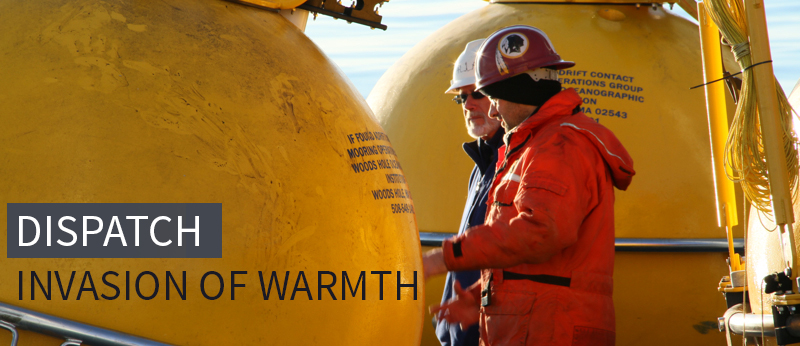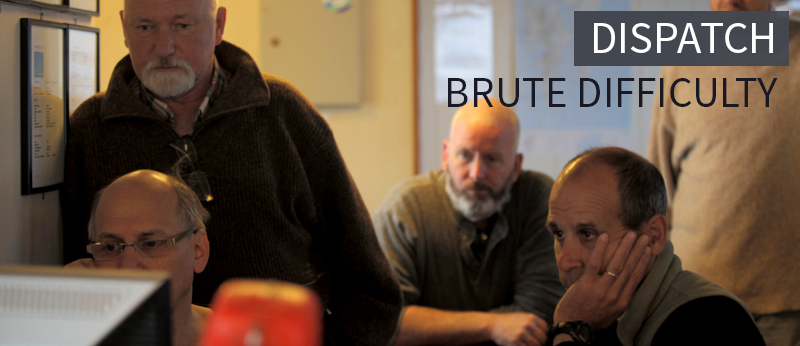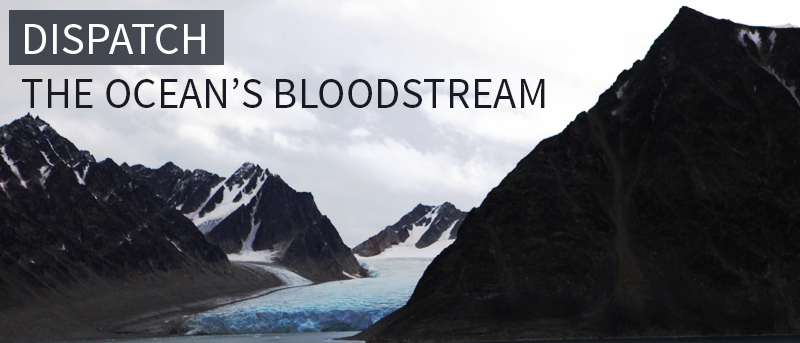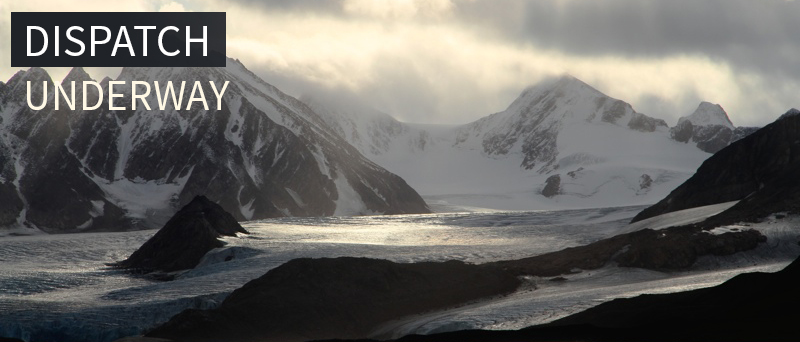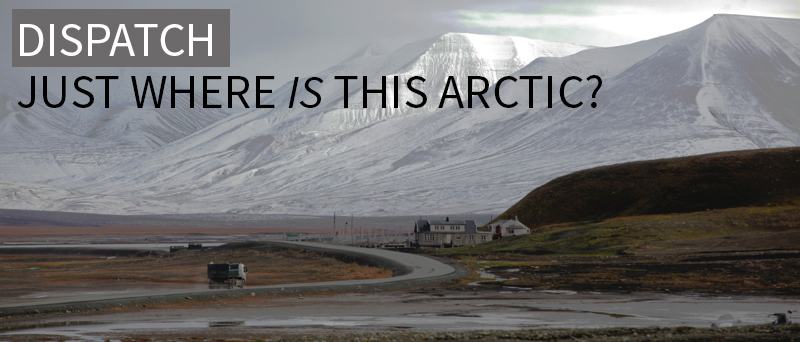HVAL!
October 1, 2013
Tweet
Captain Iversen’s voice on the intercom during breakfast: “Hallo, kan noen i messa fortelle at vi ser hval rett forut for Lance?”
Huh?
“Hval. Whales,” Chef Tom explained. “Ahead.” (It’s “val,” with a silent ‘H’)
We fetched cameras and binoculars and hustled to the bridge, others to the bow….
No, this day could not be real, an Arctic fantasy spread out before us. 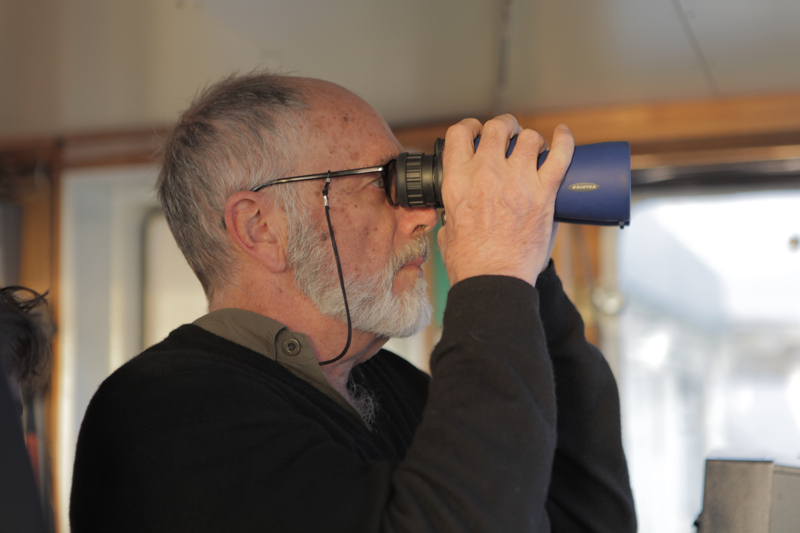 Diamond-facet silver light glimmered on the sea surface, flat as a dance floor. Away to the horizon, the sea shifted color in bands of blue, black, and under a law bank of cloud in the far distance, Caribbean turquoise. North of the sun hung a perfect half moon. The Arctic Ocean often lies behind woolly fog, a monochromatic slate-grey—secretively—but on occasions like this the murk lifts to reveal its extravagant magic.
Diamond-facet silver light glimmered on the sea surface, flat as a dance floor. Away to the horizon, the sea shifted color in bands of blue, black, and under a law bank of cloud in the far distance, Caribbean turquoise. North of the sun hung a perfect half moon. The Arctic Ocean often lies behind woolly fog, a monochromatic slate-grey—secretively—but on occasions like this the murk lifts to reveal its extravagant magic.
The bridge and bow filled with whale watchers, those on the bow heavily bundled and hooded. The Captain had slowed his ship to sightseeing pace. For those of us fortunate enough to visit these remote Arctic waters aboard research ships, the business of science sometimes resembles tourism. There are no jaded scientists or crew, no matter how many times they’ve been here before, when the Arctic so generously reveals itself. But where were the Hval?
"The Arctic Ocean often lies behind woolly fog, a monochromatic slate-grey—secretively—but on occasions like this the murk lifts to reveal its extravagant magic. "
“There—” Dead ahead, sleek little minkes, I think, judging from the sickle-shaped dorsal fins. Then fin whales appeared away to port and starboard, misty spouts hanging in the chill, crystalline air. Sophisticated whale watchers can identify individual species by the shape and height of their spouts, but I had to consult the handy guidebook to identify the fin whales that “produce a tall columnar blow that can be six meters high.” (Thanks to Kovacs and Lydersen, Birds and Mammals of Svalbard.) Among the fastest swimmers, fin whales escaped extirpation until the advent of steam-powered ships and explosive harpoons. Today they’re protected in Svalbard waters.
Long-lens camera shutters whirred as more whales joined in feeding aggregations, and we lined the bridge windows shoulder to shoulder. This is a rich season for whales, during the capelin run.
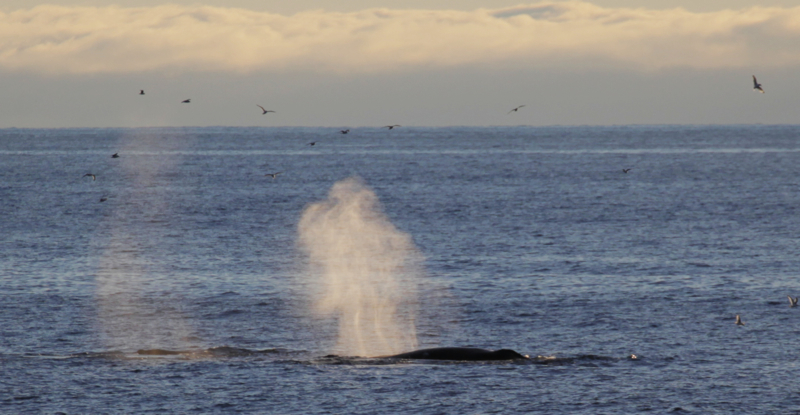 Whale focused, I did not notice the landscape until someone called attention to two snow-covered islands, like giant white whales, rolling. What were they? Where were they? Captain Iversen had the Barents Sea chart laid out on his table, all those mystical place names one imagined as a sea-struck kid reading the lit, Arctic dreaming—Franz Joseph Land, the 60-mile-long arc of Novaya Zemlya, Bear Island, Svalbard itself. I plotted our position, at 80°59’N by 026°33’E. The pair were called Karl XII Øyane. They lay 45 miles away. Forty-five miles! Yet we could see distinct fissures and ridges in their permanent ice cover as if they were close aboard. That’s another trick of the Arctic when it deigns to reveal itself—you can see forever, because there is no blue in the color spectrum, no particles in the air, so there is none of the haze that limits vision in the mid latitudes.
Whale focused, I did not notice the landscape until someone called attention to two snow-covered islands, like giant white whales, rolling. What were they? Where were they? Captain Iversen had the Barents Sea chart laid out on his table, all those mystical place names one imagined as a sea-struck kid reading the lit, Arctic dreaming—Franz Joseph Land, the 60-mile-long arc of Novaya Zemlya, Bear Island, Svalbard itself. I plotted our position, at 80°59’N by 026°33’E. The pair were called Karl XII Øyane. They lay 45 miles away. Forty-five miles! Yet we could see distinct fissures and ridges in their permanent ice cover as if they were close aboard. That’s another trick of the Arctic when it deigns to reveal itself—you can see forever, because there is no blue in the color spectrum, no particles in the air, so there is none of the haze that limits vision in the mid latitudes.
I left the bridge, piled on layers, and joined the other group of “tourists” on the bow just in time to see the humpbacks perform. A close-knit pod of five or six crossed close enough that we could hear the sibilant sound of their exhalation as they rolled. They paid us no attention. Nowadays they have nothing to fear from humans and their ships except for accidental collisions. And then, in near unison, they pointed their distinctive white flukes at the moon, hung there for a moment, and slipped into the cold depths, gone as if they’d never been, figments of Arctic dreaming.
The day’s gone now as well. It’s nearly 2300, but a pink hue sprawls over the western horizon, slashes of black clouds above, a planet, I think, but I don’t know which at this latitude, glowing through wispy clouds. There’s a melancholy feel to the scene. 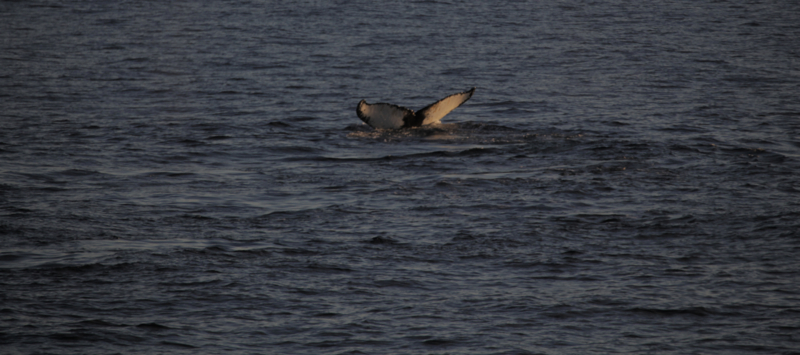 I don’t know how to account for that melancholy I feel so often along with the thrill of Arctic sights. I’m not alone in that; it often comes up in the literature. Is it inherent somehow to the spell of the Arctic, in the endless visibility, the ice, the animals, and the ocean itself, something about the timeless of the Arctic against the brevity of our passing? I don’t know, but I’ve felt it before in these latitudes, and I’m moved near tears standing alone on the transom watching the sunset’s glow….So let’s let Amy’s photographs do the taking for now.
I don’t know how to account for that melancholy I feel so often along with the thrill of Arctic sights. I’m not alone in that; it often comes up in the literature. Is it inherent somehow to the spell of the Arctic, in the endless visibility, the ice, the animals, and the ocean itself, something about the timeless of the Arctic against the brevity of our passing? I don’t know, but I’ve felt it before in these latitudes, and I’m moved near tears standing alone on the transom watching the sunset’s glow….So let’s let Amy’s photographs do the taking for now.
-Dallas Murphy


